- Home
- Peter Ackroyd
Thames
Thames Read online
Contents
Title Page
Dedication
List of Illustrations
List of Maps
I. The Mirror of History
1. The River as Fact
2. The River as Metaphor
3. The Time of the River
II. Father Thames
4. Baptism
5. The River of Stone
6. Birth
III. Issuing Forth
7. The Tributes
IV. Beginnings
8. In the Beginning
9. The Sacred Lines
10. The Battle of the Thames
Photo Insert One
V. The Sacred River
11. Holy River
12. Saints of the River
13. Hail Holy River, Mother of Grace
14. The Ruins
15. Liquid History
VI. Elemental and Equal
16. The Waters of Life
17. The Leveller
VII. The Working River
18. River Boat
19. The Bridges of Contentment and the Tunnels of Darkness
20. River Law
21. The Criminal Element
22. The Workers of the River
Photo Insert Two
23. The Natives
VIII. The River of Trade
24. The Trade of the World
25. The River of Immensity
26. Steam and Speed
IX. The Natural River
27. “Hey Ho, the Wind and the Rain”
28. The Ancient Trees
Photo Insert Three
29. “And After Many a Summer Dies the Swan”
X. A Stream of Pleasure
30. Drink Your Fill
31. Going Up the River
32. Gardens of Delight
33. Filthy River
34. “All Alive! Alive! Alive, O!”
XI. The Healing Spring
35. The Healing Water
36. The Light of the Thames
XII. The River of Art
37. Thames Art
38. The Words of the River
Photo Insert Four
39. The Song of the River
XIII. Shadows and Depths
40. River Dreams
41. Legends of the River
XIV. The River of Death
42. The Offerings
43. Head of the River
44. The River of Death
XV. The River’s End
45. Downriver
An Alternative Topography, from Source to Sea
Bibliography
Author’s Acknowledgements
Illustration Credits
A Note About the Author
Also by Peter Ackroyd
Copyright
For Penelope Hoare
List of Illustrations
SECTION ONE
The source of the Thames at Trewsbury Mead.
Objects found in the Thames:
the tooth of a mammoth;
dagger and scabbard, 550–450 BC
bronze bust of the Emperor Hadrian, c.AD 122.
Medieval pilgrim badges thrown in the Thames.
Ducking a Scold, 1812, etching by Thomas Rowlandson (1756–1827).
Angler on the riverbank, woodcut of 1663.
The Oarsman’s and Angler’s Map, 1893.
Radcot Bridge, the oldest bridge across the Thames, photographed in the 1900s.
Nets for catching eels near London, photographed in the 1890s.
An old fisherman and weir-keeper called Harper, Oxfordshire. Photographed by Henry Taunt, 1900.
Mapledurham mill, photographed in the 1900s.
A traveller waiting to be ferried across the Thames, woodcut of 1684.
A ferryman taking two men and a boy across the Thames at Cliveden. Photographed by Henry Taunt, 1885.
SECTION TWO
Fifteenth-century map of Chertsey Abbey, Surrey, and its surrounding land and farms.
Dorchester Abbey, Near Wallingford, Autumn Evening, watercolour by Newton Bennett (1854–1914).
The Tower of London (vellum), French school, fifteenth century.
Lambeth Palace. Coloured engraving by Johannes Kip (c.1652–1722) after Leonard Knyff (1650–1721).
Windsor Castle, from the river meadow on the Thames, c.1827–30. Colour litho, from The Views of Windsor, Eton and Virginia Water by William Daniell (1769–1837).
Westminster with ceremonial barge of the Ironmongers’ Company, c.1745. Oil painting by Samuel Scott (c.1702–72).
Old London Bridge, c.1630. Oil painting by Claude de Jongh (c.1610–63).
New London Bridge, 1 August 1831, the day it was first opened. Pen, ink and watercolour on paper, English school, nineteenth century.
The Greenwich Railway Viaduct at Deptford, 1836. Colour litho, nineteenth century. By G. F. Bragg.
The millennium footbridge of the year 2000. St. Paul’s, London. Photographed by Marc Atkins.
Doggett’s Coat and Badge Rowing Race, c.1820. One of the plates from Fashion and Folly.
Henley Regatta, photographed in the 1900s.
Pleasure boats on the Thames below Whitchurch Lock, Pangbourne. From a postcard of 1907.
Going through the lock at Goring-on-Thames. Photographed in the 1900s.
Poster of 1926 by Gregory Brown. Produced by the Southern Railway to advertise their day trips along the Thames.
SECTION THREE
Howland Great Wet Dock, Rotherhithe. Engraving of 1717 by Johannes Kip.
Perry’s Dock at Blackwall. Etching of 1806 by Thomas Rowlandson (1756–1827).
The East India Docks. Engraving of 1808 by William Daniell (1769–1837).
Elevated view of the docks at Wapping. Engraving of 1803 by Thomas Daniell (1749–1840) and William Daniell (1769–1837).
Inside the Docks by Gustave Doré.
Billingsgate fish market. Engraving of 1810 by Thomas Rowlandson (1756–1827). Published by Thomas Tegg in 1796.
The Thames Tunnel built by Sir Marc Isambard Brunel. From an illustrated article of 1827.
The Fleet sewer in 1840. Watercolour on paper, English school, nineteenth century.
“Faraday giving his card to Father Thames—and we hope the Dirty Fellow will consult the learned Professor.” Cartoon from Punch, 21 July 1855.
The Thames Embankment. Plate from the Illustrated London News, 1867.
A Smock Mill on the Thames. Watercolour by Peter de Wint (1784–1849).
Lambeth in 1836, showing Goding’s New Lion Ale Brewery, Fowler’s Iron Works and Walker’s Shot Manufactory. Aquatint by Francis Calcraft Turner (c.1782–1846).
Unloading barrels at London docks, 1930s.
Lots Road Power Station at night. Chelsea, London. Photographed by Daily Herald staff photographer, George Woodbine, on 26 November 1931.
The Thames Barrier, photographed by Marc Atkins.
Canary Wharf, photographed by Marc Atkins.
SECTION FOUR
Kew Gardens: The Pagoda and Bridge, 1762. Oil on canvas, by Richard Wilson (1714–82).
Westminster Bridge, with the Lord Mayor’s Procession on the Thames, 1747. Oil on canvas, by Canaletto (1697–1768).
Abingdon, Oxfordshire. Watercolour on paper, c.1805, by Joseph Mallord William Turner (1775–1851).
Rain, Steam and Speed—the Great Western Railway, painted before 1844. Oil on canvas, by Joseph Mallord William Turner (1775–1851).
Willows Beside a Stream, 1805. Oil on canvas, by Joseph Mallord William Turner (1775–1851).
Water Willow, 1871. Oil on canvas, by Dante Charles Gabriel Rossetti (1828–82).
Grey and Silver: The Thames. Oil on canvas, by James Abbott McNeill Whistler (1834–1903).
The Little Pool. Etching, by James Abb
ott McNeill Whistler (1834–1903).
“Ode on a Distant Prospect of Eton College” from The Poems of Thomas Gray, published 1797–98 and illustrated by William Blake (1757–1827). Watercolour and black ink on paper.
Baptism, 1952. Oil on canvas, by Stanley Spencer (1891–1959).
Illustration by “Phiz” (Hablot Knight Browne, 1815–82) for David Copperfield by Charles Dickens.
Illustration by Marcus Stone for Our Mutual Friend by Charles Dickens.
“The thing whirred up into the air, & hung poised on its wings”: Tom and the dragonflies. Illustration by Warwick Goble for the 1909 edition of The Water Babies by Charles Kingsley.
Alice in Wonderland: Alice swimming in the pool of tears. Illustration by John Tenniel for the 1890 edition of The Nursery Alice by Lewis Carroll.
Jones’s salad. Illustration of 1879 by Randolph Caldecott for Three Men in a Boat by Jerome K. Jerome.
“‘Shove that under your feet,’ he observed to the Mole, as he passed it down into the boat.” Ratty, Mole and the picnic basket. Illustration by Arthur Rackham for the 1939 edition of The Wind in the Willows by Kenneth Grahame.
Barrage Balloons Outside a British Port, pencil and watercolour on paper, by Eric Ravilious.
Hadleigh Castle—the mouth of the Thames—morning after a stormy night, 1829. Oil on canvas, by John Constable.
List of Maps
The river Thames from source to sea
The river Thames and its tributaries: from its source to Kew
The river Thames and its tributaries: from Kew to the North Sea
Maps to illustrate “An Alternative Topography” 1, 2, 3, 4, 5, 6, 7, 8, 9, 10, 11, 12, 13
PART I
The Mirror of History
The old Lord Mayor’s Barge
CHAPTER 1
The River as Fact
It has a length of 215 miles, and is navigable for 191 miles. It is the longest river in England but not in Britain, where the Severn is longer by approximately 5 miles. Nevertheless it must be the shortest river in the world to acquire such a famous history. The Amazon and the Mississippi cover almost 4,000 miles, and the Yangtze almost 3,500 miles; but none of them has arrested the attention of the world in the manner of the Thames.
It runs along the borders of nine English counties, thus reaffirming its identity as a boundary and as a defence. It divides Wiltshire from Gloucestershire, and Oxfordshire from Berkshire; as it pursues its way it divides Surrey from Middlesex (or Greater London as it is inelegantly known) and Kent from Essex. It is also a border of Buckinghamshire. It guarded these once tribal lands in the distant past, and will preserve them into the imaginable future.
There are 134 bridges along the length of the Thames, and forty-four locks above Teddington. There are approximately twenty major tributaries still flowing into the main river, while others such as the Fleet have now disappeared under the ground. Its “basin,” the area from which it derives its water from rain and other natural forces, covers an area of some 5,264 square miles. And then there are the springs, many of them in the woods or close to the streams beside the Thames. There is one in the wood below Sinodun Hills in Oxfordshire, for example, which has been described as an “everlasting spring” always fresh and always renewed.
The average flow of the river at Teddington, chosen because it marks the place where the tidal and non-tidal waters touch, has been calculated at 1,145 millions of gallons (5,205 millions of litres) each day or approximately 2,000 cubic feet (56.6 cubic metres) per second. The current moves at a velocity between 1/2 and 23/4 miles per hour. The main thrust of the river flow is known to hydrologists as the “thalweg” it does not move in a straight and forward line but, mingling with the inner flow and the variegated flow of the surface and bottom waters, takes the form of a spiral or helix. More than 95 per cent of the river’s energy is lost in turbulence and friction.
The direction of the flow of the Thames is therefore quixotic. It might be assumed that it would move eastwards, but it defies any simple prediction. It flows north-west above Henley and at Teddington, west above Abingdon, south from Cookham and north above Marlow and Kingston. This has to do with the variegated curves of the river. It does not meander like the Euphrates, where according to Herodotus the voyager came upon the same village three times on three separate days, but it is circuitous. It specialises in loops. It will take the riparian traveller two or three times as long to cover the same distance as a companion on the high road. So the Thames teaches you to take time, and to view the world from a different vantage.
The average “fall” or decline of the river from its beginning to its end is approximately 17 to 21 inches (432 to 533 mm) per mile. It follows gravity, and seeks out perpetually the simplest way to the sea. It falls some 600 feet (183 m) from source to sea, with a relatively precipitous decline of 300 feet (91.5 m) in the first 9 miles; it falls 100 (30.4 m) more in the next 11 miles, with a lower average for the rest of its course. Yet averages may not be so important. They mask the changeability and idiosyncrasy of the Thames. The mean width of the river is given as 1,000 feet (305 m), and a mean depth of 30 feet (9 m); but the width varies from 1 or 2 feet (0.3 to 0.6m) at Trewsbury to 51/2 miles at the Nore.
The tide, in the words of Tennyson, is that which “moving seems asleep, too full for sound and foam.” On its flood inward it can promise benefit or danger; on its ebb seaward it suggests separation or adventure. It is one general movement but it comprises a thousand different streams and eddies; there are opposing streams, and high water is not necessarily the same thing as high tide. The water will sometimes begin to fall before the tide is over. The average speed of the tide lies between 1 and 3 knots (1.15 and 3.45 miles per hour), but at times of very high flow it can reach 7 knots (8 miles per hour). At London Bridge the flood tide runs for almost six hours, while the ebb tide endures for six hours and thirty minutes. The tides are much higher now than at other times in the history of the Thames. There can now be a difference of some 24 feet (7.3 m) between high and low tides, although the average rise in the area of London Bridge is between 15 and 22 feet (4.5 and 6.7 m). In the period of the Roman occupation, it was a little over 3 feet (0.9 m). The high tide, in other words, has risen greatly over a period of two thousand years.
The reason is simple. The south-east of England is sinking slowly into the water at the rate of approximately 12 inches (305 mm) per century. In 4000 BC the land beside the Thames was 46 feet (14 m) higher than it is now, and in 3000 BC it was some 31 feet (9.4 m) higher. When this is combined with the water issuing from the dissolution of the polar ice-caps, the tides moving up the lower reaches of the Thames are increasing at a rate of 2 feet (0.6 m) per century. That is why the recently erected Thames Barrier will not provide protection enough, and another barrier is being proposed.
The tide of course changes in relation to the alignment of earth, moon and sun. Every two weeks the high “spring” tides reach their maximum two days after a full moon, while the low “neap” tides occur at the time of the half-moon. The highest tides occur at the times of equinox; this is the period of maximum danger for those who live and work by the river. The spring tides of late autumn and early spring are also hazardous. It is no wonder that the earliest people by the Thames venerated and propitiated the river.
The general riverscape of the Thames is varied without being in any sense spectacular, the paraphernalia of life ancient and modern clustering around its banks. It is in large part now a domesticated river, having been tamed and controlled by many generations. It is in that sense a piece of artifice, with some of its landscape deliberately planned to blend with the course of the water. It would be possible to write the history of the Thames as a history of a work of art.
It is a work still in slow progress. The Thames has taken the same course for ten thousand years, after it had been nudged southward by the glaciation of the last ice age. The British and Roman earthworks by the Sinodun Hills still border the river, as they did two thousand
years before. Given the destructive power of the moving waters, this is a remarkable fact. Its level has varied over the millennia—there is a sudden and unexpected rise at the time of the Anglo-Saxon settlement, for example—and the discovery of submerged forests testifies to incidents of overwhelming flood. Its appearance has of course also altered, having only recently taken the form of a relatively deep and narrow channel, but its persistence and identity through time are an aspect of its power.
Yet of course every stretch has its own character and atmosphere, and every zone has its own history. Out of oppositions comes energy, out of contrasts beauty. There is the overwhelming difference of water within it, varying from the pure freshwater of the source through the brackish zone of estuarial water to the salty water in proximity to the sea. Given the eddies of the current, in fact, there is rather more salt by the Essex shore than by the Kentish shore. There are manifest differences between the riverine landscapes of Lechlade and of Battersea, of Henley and of Gravesend; the upriver calm is in marked contrast to the turbulence of the long stretches known as River of London and then London River. After New Bridge the river becomes wider and deeper, in anticipation of its change.
The rural landscape itself changes from flat to wooded in rapid succession, and there is a great alteration in the nature of the river from the cultivated fields of Dorchester to the thick woods of Cliveden. From Godstow the river becomes a place of recreation, breezy and jaunty with the skiffs and the punts, the sports in Port Meadow and the picnic parties on the banks by Binsey. But then by some change of light it becomes dark green, surrounded by vegetation like a jungle river; and then the traveller begins to see the dwellings of Oxford, and the river changes again. Oxford is a pivotal point. From there you can look upward and consider the quiet source; or you can look downstream and contemplate the coming immensity of London.
In the reaches before Lechlade the water makes its way through isolated pastures; at Wapping and Rotherhithe the dwellings seem to drop into it, as if overwhelmed by numbers. The elements of rusticity and urbanity are nourished equally by the Thames. That is why parts of the river induce calm and forgetfulness, and others provoke anxiety and despair. It is the river of dreams, but it is also the river of suicide. It has been called liquid history because within itself it dissolves and carries all epochs and generations. They ebb and flow like water.

 The Clerkenwell Tales
The Clerkenwell Tales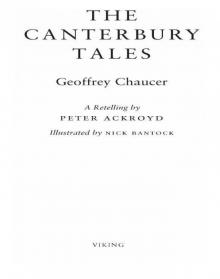 The Canterbury Tales
The Canterbury Tales J. M. W. Turner
J. M. W. Turner Chatterton
Chatterton The Canterbury Tales – A Retelling
The Canterbury Tales – A Retelling Alfred Hitchcock
Alfred Hitchcock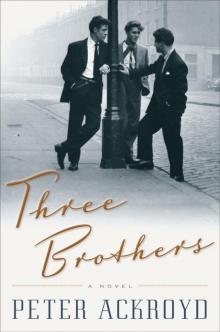 Three Brothers
Three Brothers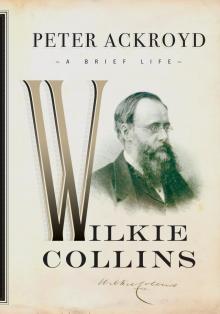 Wilkie Collins
Wilkie Collins Venice
Venice Poe
Poe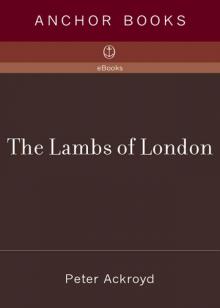 The Lambs of London
The Lambs of London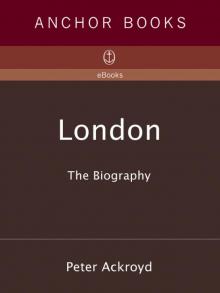 London
London Queer City
Queer City Revolution, a History of England, Volume 4
Revolution, a History of England, Volume 4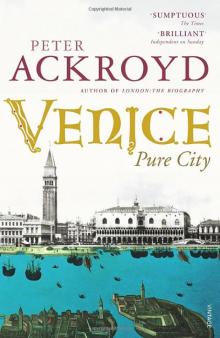 Venice: Pure City
Venice: Pure City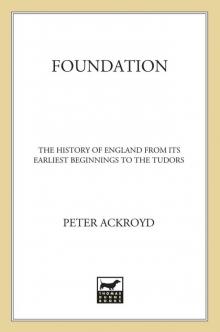 Foundation
Foundation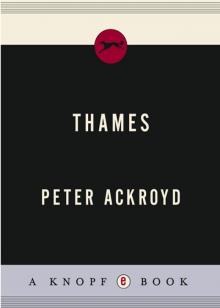 Thames
Thames The Plato Papers
The Plato Papers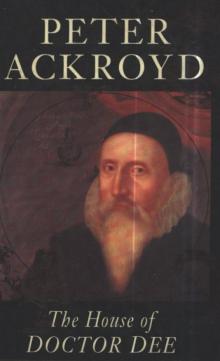 The house of Doctor Dee
The house of Doctor Dee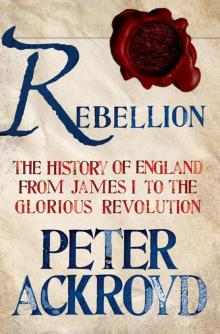 Rebellion: The History of England from James I to the Glorious Revolution
Rebellion: The History of England from James I to the Glorious Revolution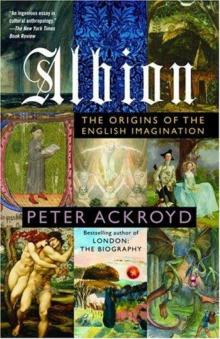 Albion: The Origins of the English Imagination
Albion: The Origins of the English Imagination The Fall of Troy
The Fall of Troy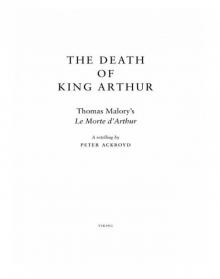 The Death of King Arthur
The Death of King Arthur The Trial of Elizabeth Cree
The Trial of Elizabeth Cree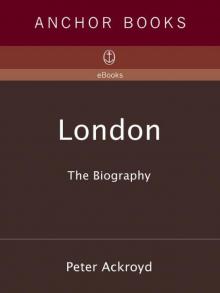 London: The Biography
London: The Biography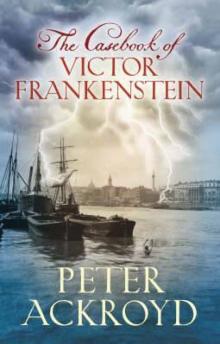 The Casebook of Victor Frankenstein
The Casebook of Victor Frankenstein Hawksmoor
Hawksmoor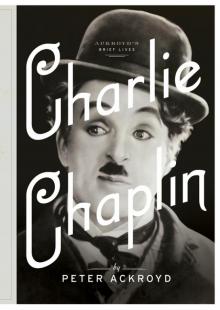 Charlie Chaplin
Charlie Chaplin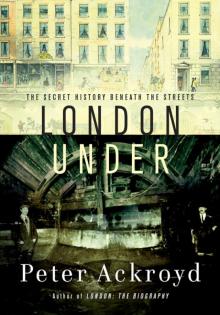 London Under
London Under